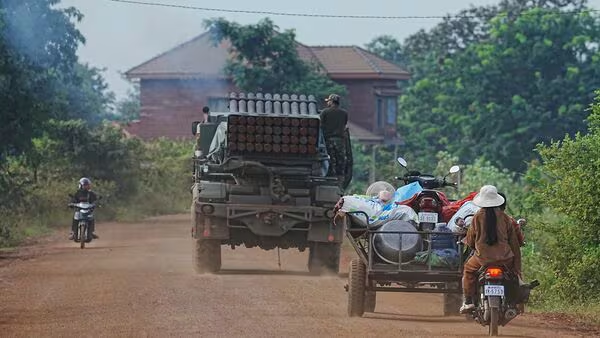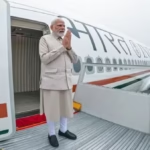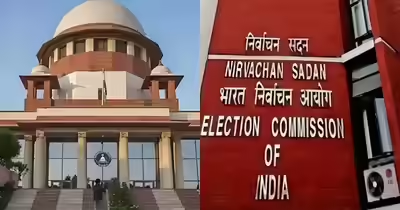Thailand-Cambodia Border Violence: Crisis at the Edge of Peace
Thailand-Cambodia border violence escalates as deadly clashes leave 14 dead and force over 100,000 to flee. Read key updates on the ongoing conflict and military reports.
Flashpoint Ignites — Clashes, Chaos, and Civilian Flight
In the dense, hilly terrain where Thailand meets Cambodia, a conflict that had long simmered beneath the surface erupted into chaos. What began as a border dispute fueled by decades-old tensions has now escalated into a deadly confrontation — one that has left at least 14 people dead and displaced over 100,000 civilians from both sides.
Over the past week, Thai and Cambodian military units have exchanged gunfire across several contested areas near the Preah Vihear region, a historic flashpoint between the two Southeast Asian nations. While both sides have accused each other of firing the first shot, independent observers say the conflict was months in the making, intensified by nationalist rhetoric, border militarization, and a lack of effective diplomatic dialogue.
The border clashes, though geographically contained, have unleashed a humanitarian crisis. According to Thai military sources, continuous shelling and small arms fire have destroyed at least seven villages along the disputed strip. Cambodian officials report similar destruction on their side, along with injuries to school children, elderly villagers, and agricultural workers caught in the crossfire.
This sudden eruption of violence has shocked the international community, particularly the Association of Southeast Asian Nations (ASEAN), which had until now hoped that quiet diplomacy could defuse the historical tensions between the two neighbors. That hope has now given way to alarm, as reports indicate the conflict may spread into more densely populated zones if not swiftly contained.
The Geography of Tension: Why This Border Matters
The border between Thailand and Cambodia stretches over 800 kilometers, but the most volatile section lies around the Preah Vihear temple, a 900-year-old Hindu site perched on a cliff that both nations claim as their own. Although the International Court of Justice (ICJ) ruled in 1962 that the temple belongs to Cambodia, the surrounding land remains contested — and that ambiguity has fed intermittent flare-ups over the decades.
What makes the current violence especially concerning is the scale and speed of escalation. In previous years, border spats were brief and managed through backchannel negotiations or third-party mediation. But this time, the combat has involved heavy weaponry, military drones, and coordinated ground offensives, signaling a dangerous shift from posturing to combat readiness.
Thai sources claim Cambodian forces violated ceasefire understandings by stationing anti-aircraft guns near a demilitarized buffer zone. Cambodian defense officials reject the accusation, insisting that Thai troops first fired mortars into a civilian compound. Caught in this tit-for-tat blame game are thousands of innocent families now stranded in makeshift camps with limited access to food, water, and medical aid.
Humanitarian Crisis Unfolds
As the violence escalated, villagers fled en masse. Fields once dotted with rice paddies and buffaloes are now deserted, littered with broken furniture, burnt motorcycles, and the remnants of lives uprooted overnight.
In Thailand’s Sisaket province, emergency relief camps have been set up in school buildings and temples. Volunteers and the Red Cross are working round the clock to distribute basic necessities. Mothers cradle infants wrapped in thin blankets, while older children queue for rationed meals under makeshift tents. Elderly men, some wearing traditional Khmer scarves, sit quietly — eyes hollow from trauma, faces lined with both age and sudden displacement.
Across the border, in Cambodia’s Oddar Meanchey province, similar scenes of anguish are playing out. Thousands of Cambodians have fled their homes and are taking shelter in hastily constructed bamboo huts or seeking refuge with relatives in more secure towns. Relief workers report a rising incidence of dehydration, infections, and untreated injuries among the displaced, especially children and pregnant women.
International organizations like UNHCR, Médecins Sans Frontières (MSF), and World Food Programme (WFP) have issued joint appeals urging both governments to open humanitarian corridors and allow unhindered access to conflict zones. But as of now, many affected regions remain inaccessible, either due to landmines, active crossfire, or military lockdowns.
Political Ramifications and Nationalist Fuel
What makes this crisis more volatile is the political context in both countries. In Thailand, a fragile coalition government faces internal dissent and rising nationalist pressure from hardline political factions who see any compromise with Cambodia as a betrayal. On the other hand, Cambodian Prime Minister Hun Manet, recently installed after his father’s long reign, is under pressure to assert sovereignty and project strength — particularly in military matters.
In both nations, state-controlled media have amplified nationalist rhetoric. Television anchors speak of “defending national soil” and “resisting foreign intrusion,” while social media platforms are flooded with videos — some doctored, some authentic — fueling public anger and misinformation.
This climate of suspicion and patriotic fervor has made rational diplomacy more difficult. Even moderate political voices who call for restraint risk being branded as weak or disloyal. And in the absence of meaningful cross-border parliamentary or civic engagement, the conflict narrative continues to be driven by military briefings and state narratives.
An independent researcher at the Institute of Southeast Asian Studies (ISEAS) put it bluntly:
“This isn’t just about a border. It’s about identity, pride, memory, and political survival. That’s what makes it dangerous.”
ASEAN’s Diplomatic Paralysis
The conflict has also exposed the diplomatic limitations of ASEAN, a regional bloc that often relies on consensus and non-intervention. While ASEAN has issued a carefully worded statement urging “restraint and dialogue,” it has yet to appoint a formal mediation team or initiate a conflict-resolution process.
Analysts point out that ASEAN’s principle of non-interference, long considered a strength, has now become a liability in moments of acute crisis. While both Thailand and Cambodia are ASEAN members, their mutual distrust and domestic political concerns have thus far kept them from engaging in trilateral or multilateral negotiations.
Calls for more robust involvement from international bodies — including the United Nations and the International Court of Justice — are growing louder. But with both countries still officially denying aggressive intent, any international intervention remains diplomatically sensitive.
The Roots of Conflict — Colonial Borders, Courtrooms, and Compounded Grievances
To fully understand the present eruption of violence along the Thailand–Cambodia border, one must delve into the tangled historical web of colonial cartography, national memory, and regional rivalry. This is a story that predates modern diplomacy and stretches back more than a century — a story shaped not only by geopolitics but by maps drawn in European capitals, far from the jungle trails and temple ridges of Southeast Asia.
The Preah Vihear Dispute: Sacred Stone and Sovereignty
At the center of the territorial feud is Preah Vihear, an ancient Hindu temple constructed during the Khmer Empire. Perched dramatically atop a 525-meter cliff in the Dângrêk Mountains, the temple lies directly along the Thailand–Cambodia border. While its historical and architectural significance is undisputed, its ownership has long been contested.
In 1904, French colonial authorities — who ruled Cambodia at the time — negotiated borders with Thailand (then Siam). However, the actual demarcation was left ambiguous. A 1907 French-drawn map placed Preah Vihear within Cambodian territory, though Thailand continued to claim administrative control based on its interpretation of natural watershed lines.
Fast forward to 1954, when Thailand occupied the temple shortly after the French withdrawal from Indochina. Cambodia brought the dispute before the International Court of Justice (ICJ) in 1959. In 1962, after intense legal arguments and geopolitical pressure, the ICJ ruled that Preah Vihear belonged to Cambodia — a decision Thailand accepted, though grudgingly.
But the ruling left the surrounding land undefined, and that sliver of ambiguity has become a perennial source of friction.
National Memory and Political Capital
In both countries, the Preah Vihear issue is deeply emotive. In Cambodia, the temple is a symbol of cultural pride and historical continuity. School textbooks narrate the ICJ victory as a righteous reclaiming of stolen heritage. Annual processions of monks and dancers mark the ruling’s anniversary as a national holiday.
In Thailand, by contrast, the ruling is remembered with bitterness. Right-wing nationalist groups argue that Thailand was “cheated” by colonial-era maps and international bias. Politicians often invoke the temple issue to galvanize nationalist sentiment, especially during times of political instability.
Over the decades, every attempt at joint management or tourism cooperation at Preah Vihear has unraveled under the weight of populist pressures, media provocation, or military friction.
The border region surrounding the temple has become a rallying ground for patriotic fervor. In 2008, when Cambodia applied to UNESCO for World Heritage Site status for Preah Vihear, Thai opposition parties accused the sitting government of “selling national sovereignty,” triggering protests and border clashes that killed several soldiers.
Thus, the roots of today’s violence lie not just in territorial claims, but in identity politics, colonial-era injustice, and selective remembrance — a volatile mix.
Previous Clashes: Patterns of Escalation
This is not the first time blood has been spilled at the Thailand–Cambodia border. In 2011, following a series of skirmishes near Preah Vihear, the ICJ was once again called upon to interpret its 1962 judgment. In a landmark clarification issued in 2013, the court reaffirmed that Cambodia held sovereignty not only over the temple itself but also over the immediate surrounding area — yet it stopped short of resolving broader border questions.
Despite the ruling, neither side demilitarized the region. Armed outposts remained in place, joint border commissions stalled, and political changes in both countries kept dialogue frozen. The 2011–2013 conflict resulted in dozens of deaths, thousands of displaced civilians, and widespread landmine concerns that still linger today.
It is within this historical context — a history of broken truces and mistrust — that the current crisis must be viewed.
While diplomats trade barbed statements and military briefings dominate national airwaves, it is the ordinary people — farmers, shopkeepers, students, mothers, and monks — who bear the brunt of this border crisis. Their lives have been abruptly overturned, and their stories reveal the human cost of geopolitical conflict.
At the Camps: Life in Limbo
In Thailand’s Surin and Sisaket provinces, the emergency camps set up for internally displaced persons (IDPs) are growing daily. What began as a short-term shelter response has become a sprawling network of tents, tarpaulin structures, and makeshift clinics, now hosting over 60,000 displaced Thai nationals.
Inside one camp near Huai Ta Mon, 52-year-old Chalida, a rice farmer, holds a photograph of her home — now reduced to charred timber. Her family had just finished the harvest when the shelling began.
“We thought it was thunder,” she says, “but the sky lit up, and everything shook. I ran barefoot through the fields with my grandchildren.”
A few tents away, a 10-year-old boy named Somchai lies on a stretcher with bandaged arms, injured by debris from an exploding mortar. His mother, crying softly, tells aid workers she fears for her husband, who stayed behind to guard the cattle.
Across the border, near Cambodia’s Choam Khsant district, a similar scene unfolds. A Buddhist nun tends to orphaned children at a temporary shelter. Aid workers from the Cambodian Red Cross report severe shortages of clean drinking water and worsening sanitation. Cases of respiratory infections and diarrhea are rising — especially among the elderly and infants.
For many, the uncertainty is the hardest part. They do not know when they can return home, or whether they will find anything left when they do. Others worry about landmines — a chilling legacy from the Khmer Rouge era and previous border clashes.
Tragedy in the Temple Zone
One of the most poignant incidents occurred near the Preah Vihear temple itself, when a Cambodian monk and two novice acolytes were caught in a cross-border exchange of fire while conducting early morning prayers. All three were killed. Their bodies were later recovered and given full religious honors in a moving ceremony broadcast nationally.
This incident stirred grief across Cambodia and sparked protests in Phnom Penh, where demonstrators lit candles in memory of the fallen and demanded justice.
Cambodian Prime Minister Hun Manet issued a statement saying:
“This is not just a violation of borders; it is a violation of sanctity, of faith, of peace itself.”
In Thailand, the military denied responsibility, saying Cambodian troops fired first and that a Thai shell may have ricocheted from terrain. But the monk’s death became a powerful symbol — one that risks fueling further emotional escalation.
The Lost Season
For border villagers on both sides, this was supposed to be the planting season — the brief window between monsoons when fields are tilled and seeds sown. But the fields now lie abandoned. Irrigation canals have been damaged, and farm tools are buried under rubble or stolen in the chaos.
In rural economies that rely on one or two annual harvests, missing a season can mean a year of hunger and debt. Local cooperatives are appealing to governments for compensation, but so far, no relief packages have been announced.
For children, school is a distant memory. Hundreds of rural schools near the border have been shut down indefinitely. Teachers have been evacuated, and many school buildings are now doubling as shelters. The psychological toll on children is already evident — sleeplessness, nightmares, sudden aggression, or withdrawal.
A Thai psychologist volunteering at a camp remarked:
“We may treat their bodies with medicine. But their minds will carry scars for years.”
Hope in Solidarity
Amid the tragedy, there are also flickers of hope. Ordinary citizens from across both nations are donating food, blankets, and money to assist those displaced. Thai and Cambodian artists have come together to produce a collaborative music video calling for peace, which has gained traction online.
Cross-border friendships — long nurtured in border markets and shared festivals — are being remembered with compassion. A viral video showed Cambodian villagers helping Thai evacuees across a shallow stream to safety, offering food and prayer along the way.
Such gestures, though small in the grand scale of geopolitics, are reminders of shared humanity — reminders that even in the shadow of gunfire and grief, people on both sides still dream of peace.
The military confrontations along the Thailand–Cambodia border are not merely isolated exchanges of gunfire — they are strategic displays of power that carry the weight of history, nationalism, and insecurity. With each passing day, the skirmishes risk spiraling into a broader armed conflict, especially given the increasingly aggressive troop posturing, artillery deployments, and aerial patrols seen across the disputed region.
The Strategic Geography of the Border
The contested territory surrounding Preah Vihear temple and the Dângrêk mountain range is treacherous and tactically significant. The region comprises dense forest, rugged cliffs, and narrow passes — terrain that complicates large-scale maneuvers but favors entrenched defensive positions and ambush-style warfare.
Thai forces have long maintained battalion-strength presence near the northern escarpments of Sisaket province, including artillery regiments with 155mm howitzers and mobile armored units. Cambodia, on the other hand, has positioned rapid response forces along Preah Vihear province, with entrenched positions supported by multiple rocket launchers (MRLs), light infantry battalions, and elite paratrooper divisions.
Observers from ASEAN defense forums have warned that neither side enjoys overwhelming advantage, meaning the conflict could devolve into a prolonged war of attrition if diplomacy fails.
A Tale of Two Militaries
Thailand’s military is considerably more advanced in terms of equipment, logistics, and manpower. The Royal Thai Army is Southeast Asia’s fourth largest, with approximately 360,000 active personnel and an array of domestically manufactured and imported weapons systems. It possesses a modern air force with F-16 fighter jets, combat helicopters, and Unmanned Aerial Vehicles (UAVs) for surveillance.
Thailand’s strategic doctrine emphasizes forward defense, and its historical posture along the Cambodian border reflects this. In recent weeks, Thai military command has deployed high-mobility artillery rocket systems (HIMARS) and established new forward operating bases along key transit routes.
Cambodia, while smaller in size and budget, has undergone significant military modernization in the past decade, thanks in large part to assistance from China, which has provided drones, surface-to-air missiles, and military training. The Royal Cambodian Armed Forces (RCAF) has adopted a “layered guerrilla” doctrine — focusing on strategic terrain, rapid mobility, and asymmetric tactics.
Moreover, the Cambodian military has placed sniper units and landmine defenses in suspected infiltration routes, which has raised alarm among Thai human rights organizations due to the dangers posed to civilians and humanitarian corridors.
War Preparations Underway?
Satellite imagery published by international conflict monitoring groups in mid-July 2025 shows a significant uptick in logistics activity, including fuel convoys, field hospital construction, and emergency supply stockpiling. These preparations signal a transition from border policing to combat readiness.
Some of the most worrying developments include:
- Multiple confirmed exchanges of mortar fire near the Ta Moan Thom temple ruins.
- Deployment of Thai Army engineers along Highway 24, preparing infrastructure for sustained troop movement.
- Cambodian military exercises involving urban warfare drills in Kompong Thom — an indication that Phnom Penh may be preparing for possible retaliation beyond the mountains.
- Thai naval mobilization in the Gulf of Thailand, which, though unrelated to the land conflict, is a strategic message to Cambodia’s regional backers, especially China.
Though both governments have publicly denied initiating war preparations, leaked intelligence from Western diplomatic cables suggests that war gaming simulations are being run by both nations’ general staff.
Risk of Full-Scale War
The longer the military standoff persists, the greater the danger of miscalculation. A single misidentified drone, a rogue unit, or an emotional retaliation for civilian casualties could spark an escalation neither side can contain.
Analysts at the International Crisis Group have warned that:
“A localized fire exchange, particularly involving temple zones, has a 40% probability of escalating into a full war if not defused within the next 10 days.”
This is compounded by the lack of real-time communication between military commands. In 2011, a hotline was established between Thai and Cambodian field commanders. But that protocol has reportedly not been used during this crisis, possibly due to distrust or breakdown in political oversight.
China’s Shadow and Global Anxiety
The growing Cambodian–Chinese military relationship adds an unpredictable layer to the conflict. China maintains deep military and infrastructural investments in Cambodia, including the controversial Ream Naval Base, which many Western analysts believe may one day host Chinese military assets.
While Beijing has called for restraint from both countries, it has not condemned Cambodia’s actions, raising concerns in Bangkok that Cambodia may be emboldened by implicit Chinese backing.
Meanwhile, the U.S. Embassy in Bangkok has issued a Level 3 travel advisory, warning American citizens to avoid eastern provinces. Australia, Japan, and several European nations have echoed similar guidance.
The United Nations Security Council has scheduled an emergency closed-door session to assess the situation, but diplomats privately express concern that any resolution may be vetoed by China, rendering the UN ineffective in de-escalating the region.
ASEAN, often seen as a neutral regional bloc, is attempting backchannel diplomacy — but internal rivalries and procedural limitations make a formal ASEAN peacekeeping mission unlikely.
Local Militias and Non-State Wild Cards
Adding to the volatility is the emergence of irregular armed groups in the conflict zone. Cambodian paramilitary units linked to local politicians have been accused of acting independently, harassing Thai civilians and looting border villages. In response, Thai nationalist militia groups — including the ultra-right “Si Saket Sentries” — have begun arming themselves and calling for volunteer patrols.
If these militias engage in skirmishes outside state command structures, it will complicate formal ceasefire enforcement and potentially draw civilians directly into combat scenarios.
Thailand’s National Security Council warned this week that “any unauthorized border vigilante action will be treated as illegal combat.”
But on the ground, emotions are high, and patience is wearing thin.
Also Read : PM Modi Arrives in Maldives, Welcomed by President Mohamed Muizzu | Watch Highlights







